From Big Lagoon back to
Cape Range National Park.
We leave Big Lagoon on Oct
15 as I have a doctors appointment in Carnarvon in a few days.
After stopping in Denham
and using the National parks washer to wash car and caravan we head
out stopping the night at Eagle Bluff just in case something went
swimming past.
The next night was in
Gladston again for the same reason , you do not know what you will
see. This is also why we went past Carnarvon to Quobba again and
only saw a baby shark in the shallows and a baby perentie just
outside the caravan.
Can not waste more time
appointments await so its back to Carnarvon. Doctor, car service ,
lots stock up shopping in Woolworths again. Exmouth where we will be
for 4 months has only 2 small IGA's
We did have time to go to
the 1 mile jetty and Rocky Pool and the Space Museum.
Rocky pool is 55km east
of Carnarvon on the Gascoyne river. It holds water most of the year,
long after the river has dried up. I found a black headed monitor
lizard at Rocky pool,i had not seen one before so it was worth the
hot drive and walk.
We went to Pelican point
which is a beach for kite surfers and is supposed to have crabs that
will crawl on your hand , we did not find any but the tide was out so
maybe they come out to feed when the tide comes in.
The Space museum has a
simulator of a space capsule so of course we went in it.
You have to dress up in
mock space suits then lay on your back feet up as if you were in a
real capsule.
You get locked in and then
it gets loud and shaky ,like the rocket take off with a count down
and pictures of space and the earth. Then it simulates the separation
of the capsule from the rocket. And orbit around earth before
leaving for the moon.
Carnarvon took part in
tracking the Apollo space ship in 1966.
The tracking station also
supported NASA in the Gemini and Skylab programs 1964 to 1975. It
helped with communications with space capsules leaving Earths orbit
and on their return.
We find the museum is run
by volunteers like us selling tickets, keeping things clean and
operating the Apollo experience. Two sets volunteers so work few days
then same amount off . We will think about it.
We buy fruit and veg from
local growers but most are closed for the summer. Still working on
farms but not much is ready at the moment.
The bananas grown here are
sweeter because of the climate and growing conditions. Dry and arid
they are grown closer together to protect from the summer sun and sea
breeze. Not much treatment of plants with chemicals as most bugs can
not survive hot conditions , most are chemical free.
After all appointments we
must head north to be there ready for turtle monitoring training.
It put back a few days so
we stop just north of Coral bay at Bruboodjoo point.. This is in the
Ningaloo reef Marine park , it is sanctuary zone but allows line
fishing from the shore and snorkelling but no shell or coral
collection. You have to go down sand road through a cattle station .
Like all stations up here they have 100 year leases and part of the
lease is to allow access to some areas. The station allows camping in
one place at point and collects fees which are used for the upkeep of
the track and camping area. There are no facilities here just hole
for rubbish and a toilet dump point for your own portable toilet.
This is Carbaba station.
We find a juvenile
Perentie on the rocks on the beach , about half grown . It must be
eating bird eggs and maybe crabs on the beach. It looks well fed.
Then we find an even
younger one, in good condition but not as fat as the larger one.
Exmouth
We get to Exmouth and
stay in town at the Ningaloo caravan and holiday resort because we
have meetings and theory training in town at the Parks and wildlife
office, just at the back of the van park.
The van park is offering
stay4 pay for 3 nights which means its a lot cheaper as its off
season now.
One of the ladies in the
office also crochets so we swap a few cottons of colours each has
spare.
The park has a very nice
big deep swimming pool so I can swim laps when there are not many
people around.
We move out of town around
to the Lighthouse caravan park which is closer to the beaches used
for our practical training. Which we have to be ready for at 5.30 am
for 3 mornings. We have different trainers each morning and
different beaches and then a few days latter a morning to be assessed
to see if we can be turned loose for monitoring.
We both pass.
During this time we have
seen lots of Green turtles mating and a lot of lady turtles resting
on the beach away from the males. They can have 4-6 males swimming
around her waiting for their chance to mate. It looks traumatic for
the ladies as they are underneath and have to fight to get to the
surface to breath. We are reliable informed by the marine ranger
that the ladies do have a bit of a choice in who she mates with even
though it does not look like it from the beach. The lady comes and
lays on the sand away from them and sleeps safely as the males do not
come ashore. The only time a male is out of the water is when he is
still on top of female when she gets herself out of the water.
Sometimes the male gets washed upside down by a wave at this time .
He is fine if the tide is coming in ,it will help him get right way
up but if the tide is going out he faces a long hot 6 hour wait for
the waves and water to help him . So we can help him very carefully
get the right way up so he can get himself back to the water.
We see some early
attempts at nesting and some that contain eggs in the nests.
We saw 2 Hawksbill turtle
tracks -no nests or turtles , but at least we know what to look for.
When we start monitoring on our own .
Nesting starts in earnest
in December through January. We start monitoring on our own the last
weekend of November and its getting busy on the beaches.
We also put ourselves in
for helping the Rangers do a count of the endangered Black Flanked
Rock Wallabies. This is 3 mornings in a row in different gorges in
the National Park again early morning start to be there to start
count when the sun is up and they are out sitting in it before
retiring to caves in the heat of the day.
We had taken photos of two
radio collared from here that had been released in Kalbarri NP. The
rangers there had contacted us to get permission to use our photos in
the Summer addition of the Parks and Wildlife magazine.
We have a few days before
we start our volunteer stint so move into south of the NP to snorkel
and walk some gorges in the south.
Exmouth 1270km north of
Perth with a population of 2250 residents. With lots of tourists
mainly in winter season, but its still busy with tourists in Nov and
Dec this year..
Cape range NP is 36 km
from Exmouth to the gate at the start of the park.
With Ningaloo Marine park
stretching 300km along the coast. The Ningaloo coast world heritage
area covers 6045km. No real monsoon season but hot dry days with sea
mists overnight making things feel damp most mornings. Up to 48 deg
during summer days but most days afternoon sea breezes on this side
of the peninsular but not in Exmouth.
The reef is one of only
two coral reefs in the world that have formed on the western side of
a continent .
Ningaloo reef is one of
the closests reefs to land in the world and Australias longest
fringing reefs.
During WW11 a joint
operation between Aust and USA Navy and Air forces established an
airfield and submarine base here for re-fuelling and submarine
communication. Thats why there is an airport here- RAAf Learmonth
which is now part used for public flights in and out.
E Holt Communications
station uses very low frequency transmitter has the second tallest
structure in southern hemisphere. 387.6 metres high with 12 other
towers around it. All can stand winds up to 500km an hour so are ok
in cyclones.
In 1992 the air and navy
forces handed over running of communications to civilian contractors
leaving the town with out the money of both forces so eco tourism
started . Money now comes from tourists , off shore iol and gas
,commercial prawn fishing and a few defence force personnel.
Tourists are here for
Humpback whales -June to
nov as they migrate north for calving and return south to feeding
grounds.
Whalesharks—mid March to
August
Manta rays march to
August with permanent ones in Coral bay.
Turtles-November to March
Snorkelling over coral
reef all year.
Black flanked rock
wallabies.
We do two early morning
Turtle monitoring 5 am start then move caravan from Osprey camp to
Mesa and do 3 early morning rock wallaby counts .
You get to your set GPS
location in the gorge and then after synchronising times on radio
with others you sart your count.
You scan the designated
rock wall in front of you with binoculars , starting from left to
right you have 5 mins . No going back over an area you have scanned
counting as you go
and sexing, writing down
what you see , male, female tagged or not, with pouch young or at
foot, and where you see them sun, shade, ledge vegetation etc. Its a
lot to do in 5 minutes then you stop for 5 mins and then start again
same thing 3 times on same area.
Then stop and move to next
area and do all over again. Different gorges each morning. It was
hard the first time you look to make sure you do not miss any or take
to long or go to quick and get all information right. After 3 days of
this for a couple of hours each morning it gets easier to see them.
We will help again in
February 2019 before we leave the park.
The turtle monitoring is a
lot more walking the beaches and sand dunes early morning following
turtle tracks , making decisions on which species and whether it has
nested or not, all without disturbing the nests.
We have a backpack with a
GPS monitor. A radio, and a tablet to enter all details. As well as
paperwork for recording other things like predators , nest
disturbance and notes for next person the following day. All facts
are entered on the tablets to be up loaded to Perth for collation.
Some mornings are busier
than others some are longer beaches some have more sand dunes so more
walking. The program on the tablets are good you fill out each bit
and it leads you to the next depending on your answers, takes GPS on
nests and photos of anything you are not sure of.
It can be hard walking
some times but its good doing it and seeing all the things.
Mesa Camp Hosting.
As well as turtles and
wallabies we are here to camp host. December is Mesa camp again , we
did this in August, but now we have to look after Neds camp as well.
So we have a kobodo buggy to carry stuff and drive the track to both
camps.
We have a lot of tourists
still here but as soon as the school holidays start we have a lot of
west australians including some of the Exmouth business people who
close for the christmas new year period.
A few of the camp grounds
are closed in summer as this is classed as off season as too hot for
most tourits and its cyclone season. Which we are calling turtle
season not cyclone season. Some of the rangers and Marine rangers go
on holidays at this time.
Mesa campground was only
renewed late 2017 after a big storm with lots of rain washed away and
flooded most of the campground.
It only has 23 sites and
Neds has 9 . both have day use areas with sand beach small boat
launching not beach driving areas. Mesa is used by wind surfers and
Kite surfers from around the world as it gets some windy days this
time of the year..
Mesa also has a good area
for snorkelling but its on a point so the current can get fast some
days and tides. Low tide is best and you get all the normal tropical
fish on the coral plus just past the main coral the reef drops deeper
so you get schools of bigger fish .
We did see a giant grouper
about 2 metres long and about a metre wide, and a 2 metre guitar
fish.
We new about the giant
grouper at snorkelling site a couple of klms away so we do not know
if its the same one or not.
We went out to the outer
reef again on the glass bottom boat and snorkelled again.
Larry did a micro light
flight for christmas and birthday . I was going to go when we thought
it was just ½ hour flights but these do not come over this side over
the reef.
To fly over the reef its
an hour or longer and I did not think my stomach would allow me to be
in this little thing being tossed round for an hour , plus it was
over $300 each.
The pictures he took show
lots of turtles in the sea at the beaches we do the monitooring a
very large Tiger shark at Mesa beach. He lives here and eats the
turtles so is not interested in humans as he is very well fed. The
rangers call him Terry the Tiger shark.
We spent a night camping
with Rangers and marine rangers and other turtle monitors in a area
where Loggerhead turtles nest. We went out on the beach at night as
well as monitoring early morning so we could learn about this turtle.
We slept in our tent on stretchers we had bought, dinner and
breakfast was supplied and we all got to know one another. I did fall
over some rocks on the beach in the dark and bruised and scratched
both my knees that took a couple of weeks to heal .
These are the places in
the park we visit a lot.
Mangrove bay has a bird
hide that looks over the mangrove lagoon. With a walk around the
mangroves. On the other side a track leads down to a beach with a
rocky mud flat that gets uncovered when the tide is out. Here in the
shallows is a nursery for reef sharks and rays that come into the
shallow water as the tide comes in . You walk across the flat to a
sand bar on the reef to the channel where the water enters from
deeper parts of the reef. Its here the reef sharks and rays wait to
enter the flats with the tide. So we lay or sit in the water with
snorkels on and cameras and take pictures. As they swim past.
We found these in August
when we were here and they are a lot bigger now. Photo Larry with
camera under water and I got photo of sharks swimming towards him
and past him . Fun we spend a couple of hours out there when we
visit.
Lakeside sanctuary zone.
You have to walk 500metres
from the old campsite that got washed away in either the storm or
last cyclone. There are markers on the beach and in the water showing
the sanctuary zone. Here a series of large coral bommies attrack
larger fish as well as turtles, reef sharks and the resident giant
groper that lives in a coral cave. We also got some dolphines one day
chasing a school of tiny bait fish. They had got them into a bait
ball and as they were eating the bait ball broke into smaller balls
of tiny fish. We could not keep up with the dolphins only got
pictures of the smaller bait balls after the feeding frenzie.
Oyster Stakes.
Named because of the rocks
in the area are covered with oysters, its also protected area.
You can only snorkel here
at high tide which is more than 1.2 metres so no damage is done to
the coral in the shallow water of the area. Plenty of fish in and
around the oyster covered rocks and the coral.
Turquoise Bay
Has two parts to it a
calmer bay side and a southern side called drift snorkel. This is he
most popular snorkel site for those that are experienced . Strong
currents occur here that are caused by a build up of water in the
lagoon behind the reef . Large waves and high tides add water to the
lagoon so it rushes to escape through gaps in the outer reef to back
to the ocean. The gaps in the outer reef are caused over thousands of
years of water following down the usually dry creeks. Each gap is
opposite a gorge in the hilly range down the centre of the
peninsular .
It is the best place to
snorkel, you walk south along the beach get in and drift over the
amazing coral and fish. At times I had trouble trying to stay above
the coral to take pictures. There is one good bit we found hawksbill
turtles but it is close to where you get out before the current takes
you out over the reef and to sea, so I had trouble against the
current so only went out there a couple of times.
Yardie Creek
This is the only creek and
gorge with permanent water as it is fed by the ocean.
There are boat trips down
the gorge which we did last time we were here. We walked the 2 walk
trials and I found Spiny tailed monitor lizard here-varanus
acanthurus. Along with the rock wallabies and lots of ospreys.
Mandu Mandu gorge.
This is one of the gorges
we did the Black Flanked rock wallaby count in . The trail goes along
the dry creek bed and then goes up the side of the gorge to the north
ridge and back to the car park. There are small narrow steep gully
crossings and it is not for the unfit. I'm glad when we did the
wallaby counts I only had to walk the dry creek bed. We have walked
the whole gorge a few times but it has to be early morning before the
heat of the day.
In December I was eating
nuts which is nothing out of the ordinary but part of one of my tooth
fillings came out bringing with it part of the tooth. I had to go
into Exmouth and we found along with the private dentist the WA govt
run a dentist at the hospital . I had my tooth removed as it could
not be repaired and the young dentist is fixing both Larry's and my
teeth while we are in the area. Its a lot quicker than in Victoria
where you have to wait a year. You get appointments when he is here
as he rotates weekly to a couple of other towns in the area , so my
appointments are 3 weekly. It does cost a bit more but my tooth
being pulled out was only $70 as I am age pensioner.
He does a good job as he
has not got up to date equipment.
We have Dingos in the park
and in Exmouth. The ones in Exmouth can be a problem as they have
learnt to scavenge food from rubbish bins and over the years people
have fed them.
Out in the Nation park
they are not fed but occasionally do come through the campgrounds. We
have some living close to Mesa camp and Neds camp which we see
sometimes. A couple of them started coming into camp and I had one
walk past me at night. Young ones are seen and look at you like they
are saying come play with me. They play and chase the small crabs on
the beaches. As long as people do not fed them or leave food scraps
where they can find them then its good to see the dingos. Most people
when you explain to them do the right thing and just take photos.
After the New Year we
move from Neds to Osprey camp further south in the park. This will
be in the next blog. As it starts a new year. We will be here until
March, still turtle monitoring and helping with next rock wallaby
count.

 Cape Range National Park, Western Australia, Australia
Cape Range National Park, Western Australia, Australia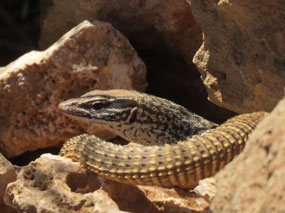
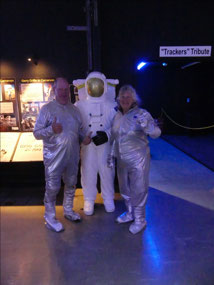
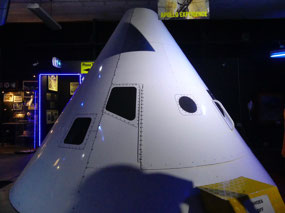
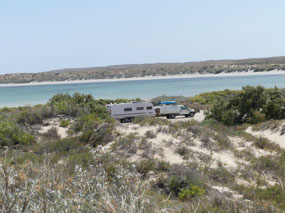

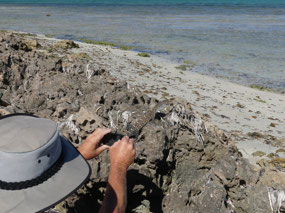
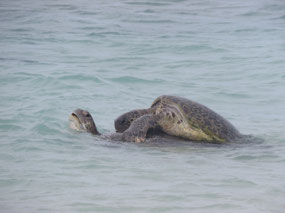
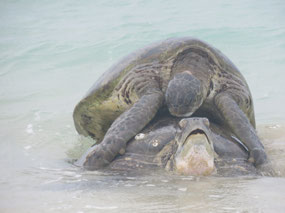
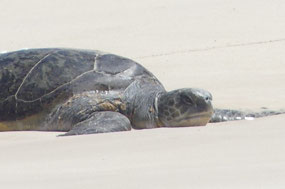
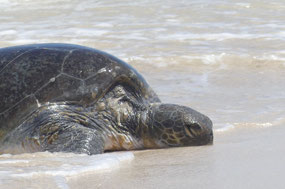

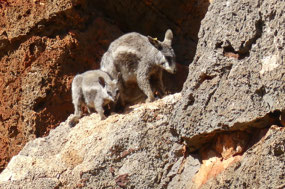
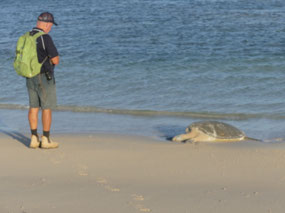

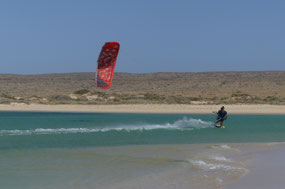
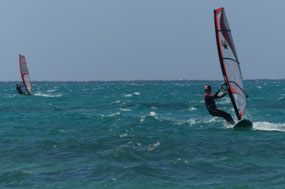
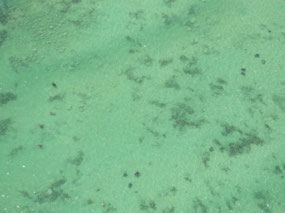
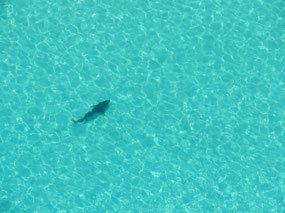
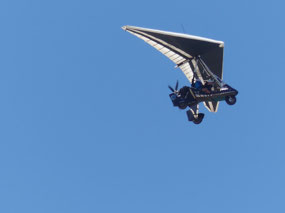
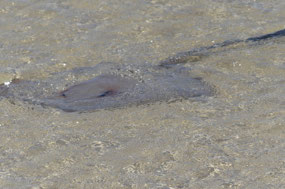
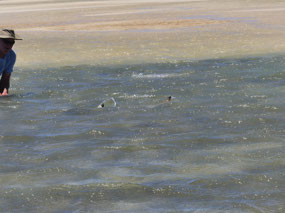

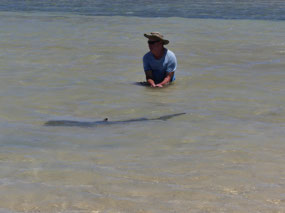
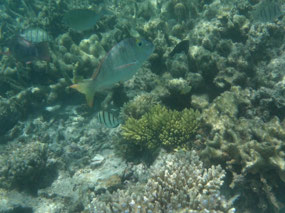
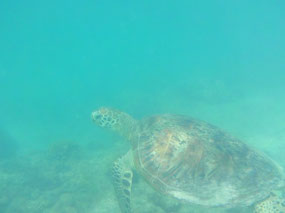
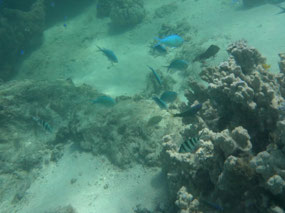
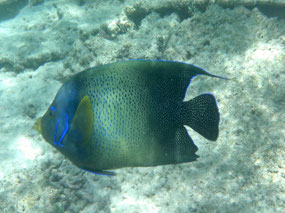
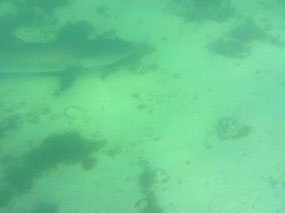
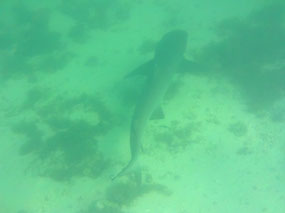
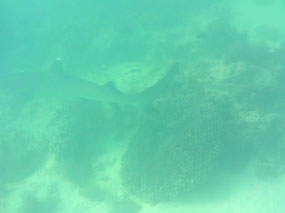
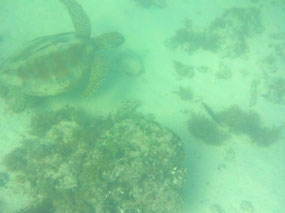
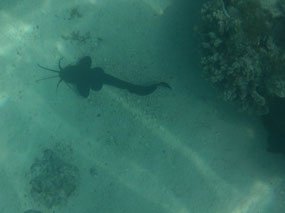
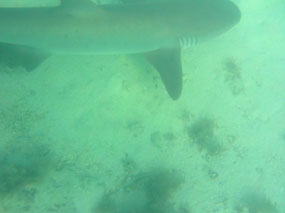
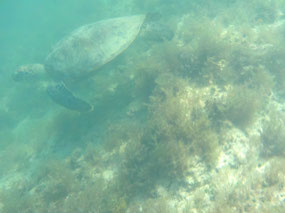
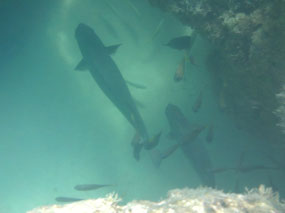

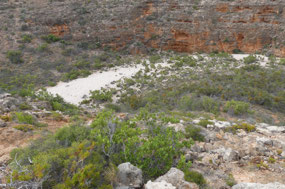
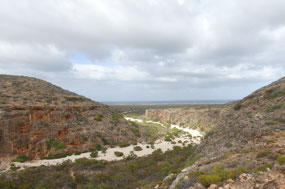


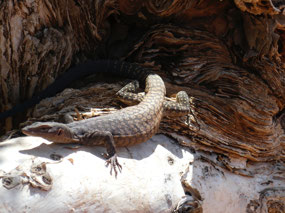
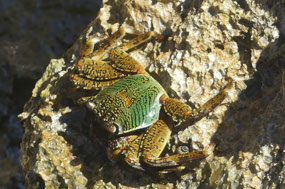
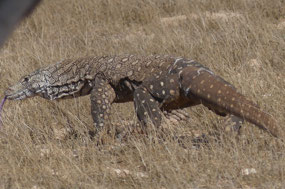
2025-05-22